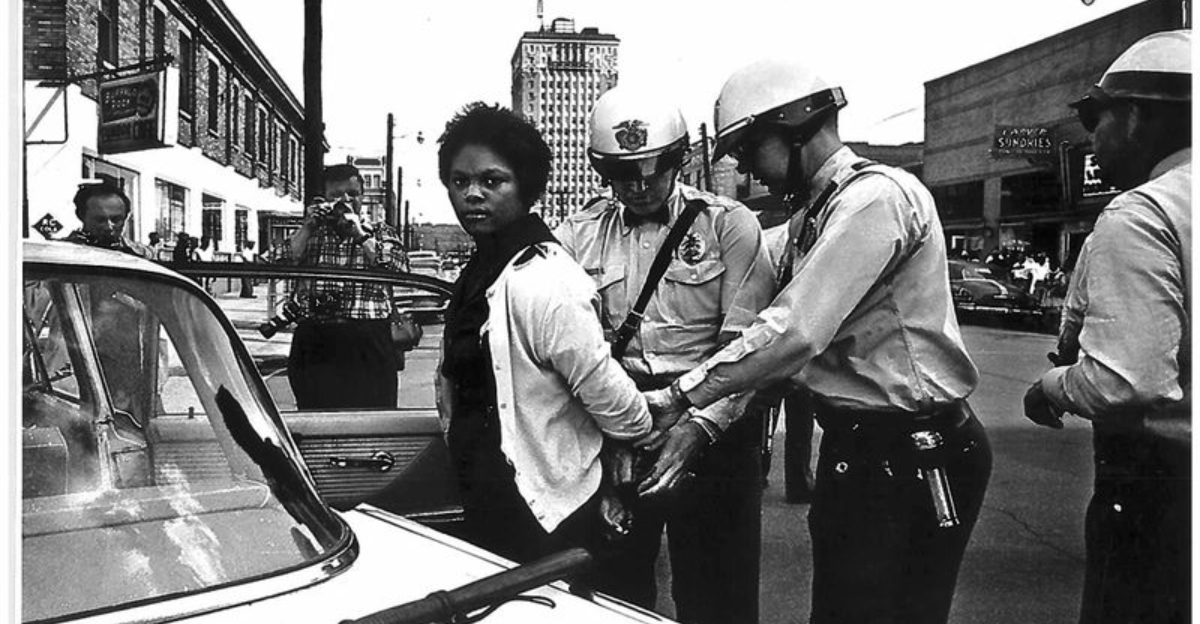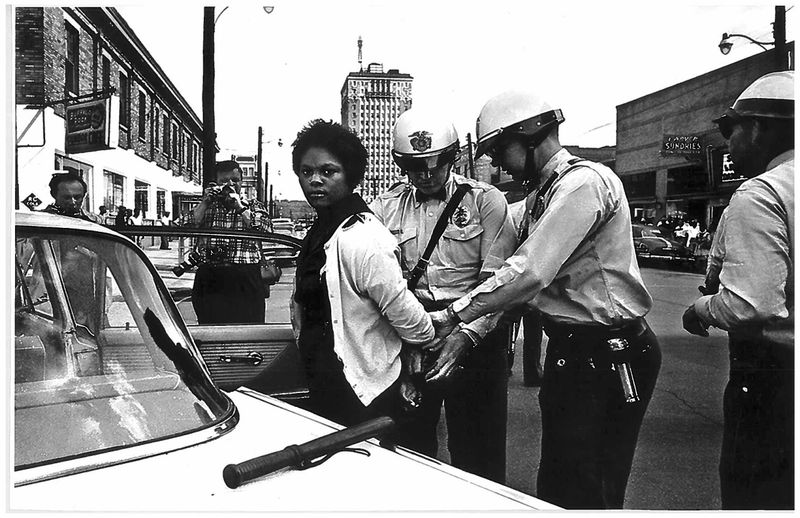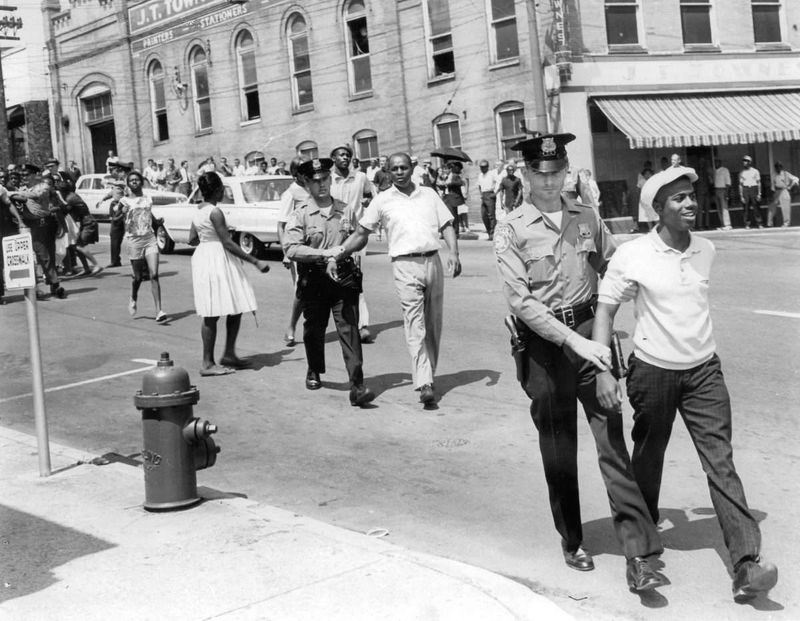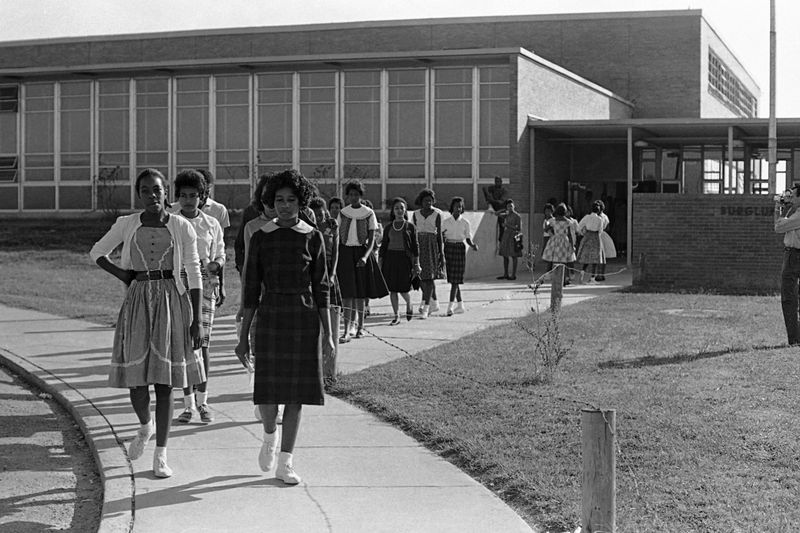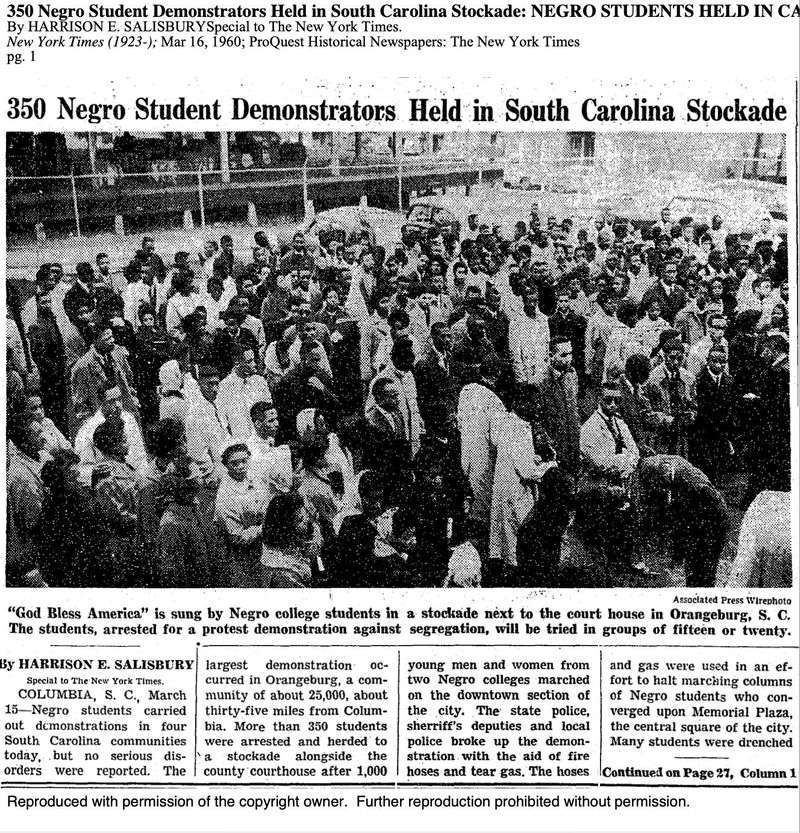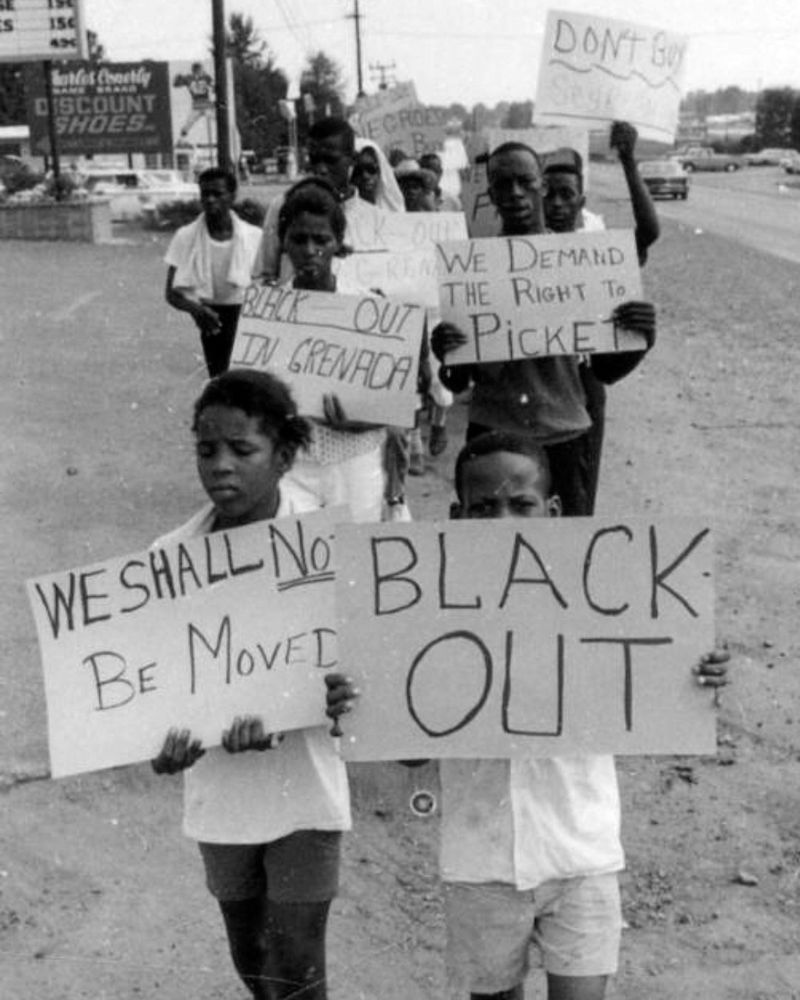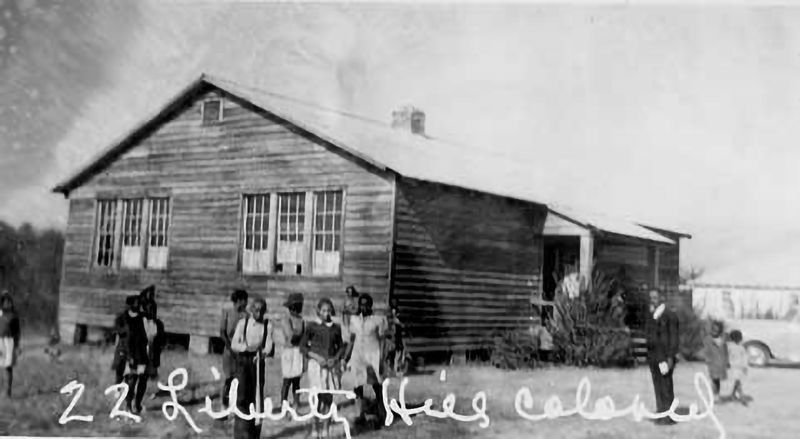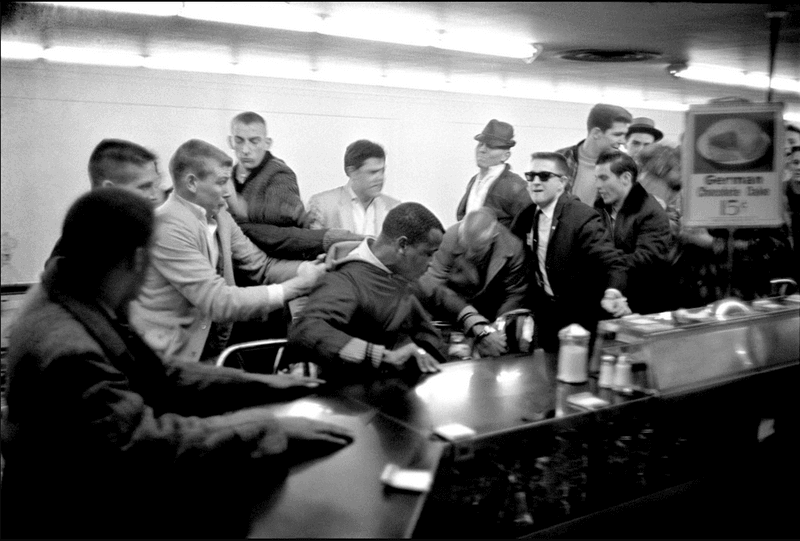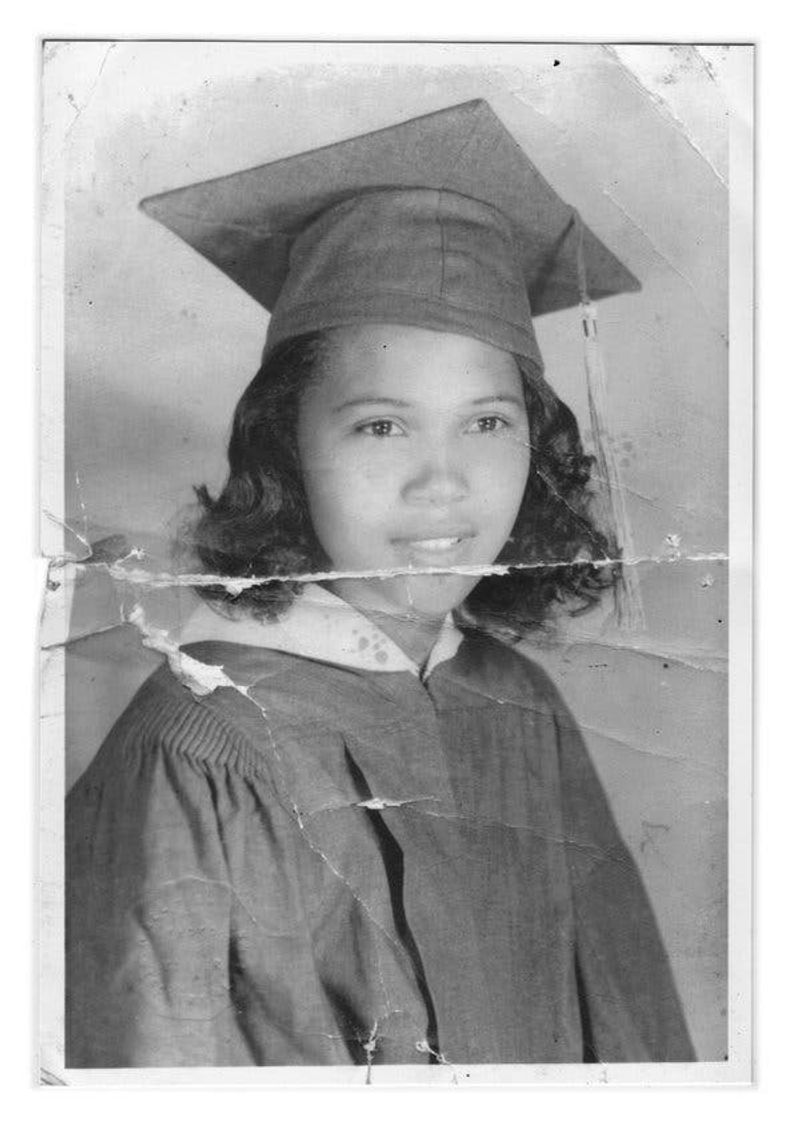When we think of civil rights heroes, we often picture adults leading the charge. But some of the most powerful moments in the fight for equality came from teenagers who refused to accept injustice.
Young people across America stood up, marched out, and faced danger to demand a better future. Their courage changed laws, shifted public opinion, and built the foundation for rights we sometimes take for granted today.
1. Clinton 12 Walk-In (1956)
Every morning, twelve brave Black teenagers walked together through hostile crowds to attend the previously all-white Clinton High School in Tennessee. Their daily journey required extraordinary courage as angry mobs hurled insults, threats, and sometimes objects at them.
National Guard troops eventually had to escort these pioneers to school. Despite constant harassment, they persevered, becoming the first to successfully integrate a public high school in the South following the Brown v. Board decision.
The Clinton 12’s determination opened doors for countless students who followed. Their story demonstrates how everyday acts of bravery—simply walking to school—can help dismantle deeply entrenched systems of inequality.
2. Tougaloo Nine Library Protest (1961)
Nine Black college students from Tougaloo College quietly entered Jackson’s whites-only public library on March 27, 1961. They simply sat down and began reading books unavailable at their segregated library. Police quickly arrested them for breaching the peace.
Many of these brave students were still teenagers. Their carefully planned “read-in” sparked similar protests across Mississippi, where young people challenged segregation by attempting to use basic public services.
The Tougaloo Nine spent the night in jail but gained national attention. Their peaceful action highlighted the absurdity of denying people access to books based on skin color and inspired other youth-led civil rights demonstrations throughout the South.
3. Birmingham Children’s Crusade (1963)
Thousands of young people flooded Birmingham’s streets in May 1963, deliberately filling the jails to protest segregation. The youngest participants were just six years old, skipping school to march toward downtown.
Police Commissioner Bull Connor ordered fire hoses turned on children with enough force to tear bark from trees. Images of kids being attacked by police dogs and slammed against walls by water cannons shocked the nation’s conscience.
The young marchers’ sacrifice worked. Within days, Birmingham’s business leaders agreed to desegregate stores and hire Black employees, proving children could be powerful agents of change.
4. Albany Movement Youth Marches (1961-1962)
High school students in Albany, Georgia became the backbone of a movement challenging segregation in all public facilities. When adults faced losing jobs for protesting, teenagers stepped forward, organizing daily marches that police couldn’t stop without filling every jail cell.
Student leaders from the newly formed Student Nonviolent Coordinating Committee (SNCC) taught workshops on nonviolent resistance. Young protesters sang freedom songs while being arrested, maintaining dignity despite harsh treatment.
Though the Albany Movement faced setbacks, these teenage activists developed tactics later used successfully elsewhere. Their persistence demonstrated how young people could sustain a movement through the darkest moments, creating a template for youth organizing that continues today.
5. St. Augustine High School Walkout (1964)
When civil rights leaders were jailed in St. Augustine, Florida, local teenagers refused to stay silent. Hundreds of Black high school students spontaneously walked out of class, marching directly to the jail in solidarity with arrested demonstrators.
Police met the young protesters with violence, arresting many and using cattle prods to disperse others. Rather than intimidating the students, this brutal response strengthened their resolve and attracted national media attention.
The teenagers’ bold action reinvigorated the St. Augustine movement at a critical moment. Their walkout showed how young people could inject new energy into ongoing struggles, demonstrating that even spontaneous youth activism could significantly impact the fight for civil rights.
6. Danville Student Walkouts (1963)
Segregation remained firmly entrenched in Danville, Virginia until local teenagers decided enough was enough. Students from the all-Black high school organized walkouts protesting discriminatory hiring practices and segregated facilities throughout the city.
Police responded with shocking brutality, using fire hoses and clubs against peaceful teenage protesters. One night, officers cornered demonstrators in a church basement, beating them mercilessly in what became known as “Bloody Monday.”
Despite facing some of the worst violence of the civil rights era, these young activists persisted. Their courage forced Danville’s power structure to eventually negotiate, proving that even in smaller cities, determined young people could challenge deeply entrenched racial hierarchies.
7. McComb Student Protests (1961)
Sixteen-year-old Brenda Travis sparked a movement when she was arrested for sitting at a whites-only Greyhound lunch counter in McComb, Mississippi. After her arrest, over 100 fellow students walked out of their segregated high school in protest.
School officials responded by expelling the protesters. Undeterred, these teenagers created their own “freedom school” where they continued their education while learning organizing tactics from SNCC workers.
McComb became one of the most dangerous places for civil rights workers, with bombings and beatings commonplace. Despite this terror campaign, these brave teenagers continued organizing, laying groundwork for future voting rights campaigns and demonstrating extraordinary courage in one of the Deep South’s most violently segregated communities.
8. Orangeburg High School Student Marches (1960-1961)
Students from Orangeburg’s all-Black high schools and South Carolina State College transformed their city through persistent, disciplined protest. Teenagers organized daily marches to the segregated downtown, facing arrest while demanding access to public libraries, lunch counters, and parks.
Local authorities tried everything to stop them—arresting hundreds, using fire hoses in freezing weather, and even spraying protesters with chemical pesticides. Many young demonstrators spent weeks in outdoor prison compounds rather than accept bail.
Their determination eventually forced Orangeburg businesses to integrate. These young activists created a powerful template for student organizing that spread throughout South Carolina, showing how youth-led movements could sustain pressure through multiple tactics and withstand brutal opposition.
9. Grenada School Integration Movement (1966)
Black teenagers in Grenada, Mississippi faced extraordinary violence while attempting to attend newly integrated schools. White mobs attacked them daily as they walked to school, beating them with chains, pipes and axe handles while police watched.
Rather than retreat, these courageous students formed human chains for protection. They documented their injuries and continued returning to school day after day, refusing to surrender their right to equal education.
Their persistence eventually forced federal authorities to intervene. The Grenada students’ commitment to nonviolence despite brutal attacks revealed the moral bankruptcy of segregation’s defenders and demonstrated how teenage determination could overcome seemingly insurmountable resistance, even in Mississippi’s most hostile communities.
10. Summerton High School Walkouts (1950s)
Long before most civil rights marches began, students in rural Summerton, South Carolina took extraordinary risks to challenge educational inequality. These brave teenagers and their families initiated the court case Briggs v. Elliott, which later became part of Brown v. Board of Education.
After filing the lawsuit, students faced severe retaliation. Many of their parents lost jobs, were evicted from homes, or denied credit at local stores. Despite these hardships, the students organized walkouts protesting their grossly unequal school facilities.
Their persistence through years of economic punishment and threats demonstrated remarkable courage. These young people from a tiny rural community helped launch the legal revolution that eventually dismantled school segregation nationwide, proving that even the youngest citizens could challenge systemic injustice.
11. Nashville Student Movement (1960)
College students in Nashville developed a revolutionary approach to nonviolent protest, with high schoolers providing crucial support. Before attempting sit-ins, young activists underwent rigorous training—practicing how to remain calm while being beaten, spat upon, or having cigarettes extinguished on their bodies.
Their disciplined approach paid off when they began integrating downtown lunch counters. Images of well-dressed students sitting quietly while being assaulted by white mobs generated national sympathy for their cause.
The Nashville movement produced many civil rights leaders who later organized campaigns across the South. Their success demonstrated how strategic planning, combined with the moral courage of young people, could overcome entrenched segregation and create a template for effective nonviolent resistance still studied today.
12. Prince Edward County School Strike (1951)
Sixteen-year-old Barbara Johns did something extraordinary in 1951—she organized a student strike against unequal education in rural Virginia. Tired of attending an overcrowded school with a leaking roof while white students enjoyed modern facilities, she rallied 450 classmates to walk out.
After contacting NAACP lawyers, their protest became one of the five cases in Brown v. Board of Education. When the Supreme Court ordered integration, local officials closed all public schools rather than integrate, leaving Black students without education for five years.
Barbara’s courageous leadership showed that even rural teenage girls could spark national change. Her initiative demonstrated how young people could identify injustice and take bold action, even without adult support or resources, fundamentally altering America’s educational landscape forever.
13. Chicago Public School Boycott (1963)
Over 200,000 students—nearly half of Chicago’s public school population—boycotted classes on October 22, 1963, in what became known as Freedom Day. Teenagers organized alternative “freedom schools” in churches and community centers, where they learned about civil rights and Black history.
Unlike Southern protests, this massive boycott targeted Northern-style segregation—policies that maintained separate and unequal schools without explicit segregation laws. Young organizers highlighted overcrowded Black schools operating in shifts while nearby white schools had empty classrooms.
This youth-led action forced Chicago to acknowledge systemic educational inequality beyond the South. The boycott demonstrated how teenagers could mobilize massive numbers around complex issues of structural racism, challenging the myth that segregation was solely a Southern problem.
